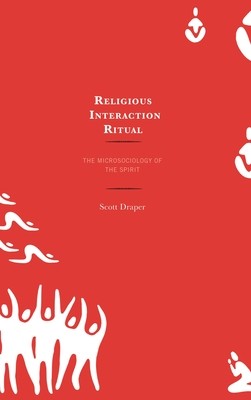
- We will send in 10–14 business days.
- Author: Scott Draper
- Publisher: Lexington Books
- ISBN-10: 149857629X
- ISBN-13: 9781498576291
- Format: 15.8 x 23.1 x 2 cm, hardcover
- Language: English
- SAVE -10% with code: EXTRA
Reviews
Description
This book is a microsociological study of religious practice, based on fieldwork with Conservative Jews, Bible Belt Muslims, white Baptists, black Baptists, Buddhist meditators, and Latino Catholics. In each case, the author scrutinizes how a congregation's ritual strategies help or hinder their efforts to achieve a transformative spiritual encounter, an intense feeling that becomes the basis of their most fundamental understandings of reality. The book shows how these transformative spiritual encounters routinely depend on issues that can seem rather mundane by comparison, such as where the sanctuary's entrance is located, how many misprints end up in the church bulletin, or how long the preacher continues to preach beyond lunchtime. The spirit responds to other dynamics, as well, such as how congregations collectively imagine outsiders, or how they talk about ideas like individualism and patriarchy. Building on provocative theories from sociologists such as Ãmile Durkheim, Erving Goffman, Randall Collins, and Anne Warfield Rawls, this book shows how "interaction ritual theory" opens compelling new pathways for sociological scholarship on religion. Micro-level specifics from fieldwork in Texas are supplemented with large-scale survey analysis of a wide array of religious organizations from across the United States.
EXTRA 10 % discount with code: EXTRA
The promotion ends in 18d.10:45:13
The discount code is valid when purchasing from 10 €. Discounts do not stack.
- Author: Scott Draper
- Publisher: Lexington Books
- ISBN-10: 149857629X
- ISBN-13: 9781498576291
- Format: 15.8 x 23.1 x 2 cm, hardcover
- Language: English English
This book is a microsociological study of religious practice, based on fieldwork with Conservative Jews, Bible Belt Muslims, white Baptists, black Baptists, Buddhist meditators, and Latino Catholics. In each case, the author scrutinizes how a congregation's ritual strategies help or hinder their efforts to achieve a transformative spiritual encounter, an intense feeling that becomes the basis of their most fundamental understandings of reality. The book shows how these transformative spiritual encounters routinely depend on issues that can seem rather mundane by comparison, such as where the sanctuary's entrance is located, how many misprints end up in the church bulletin, or how long the preacher continues to preach beyond lunchtime. The spirit responds to other dynamics, as well, such as how congregations collectively imagine outsiders, or how they talk about ideas like individualism and patriarchy. Building on provocative theories from sociologists such as Ãmile Durkheim, Erving Goffman, Randall Collins, and Anne Warfield Rawls, this book shows how "interaction ritual theory" opens compelling new pathways for sociological scholarship on religion. Micro-level specifics from fieldwork in Texas are supplemented with large-scale survey analysis of a wide array of religious organizations from across the United States.


Reviews